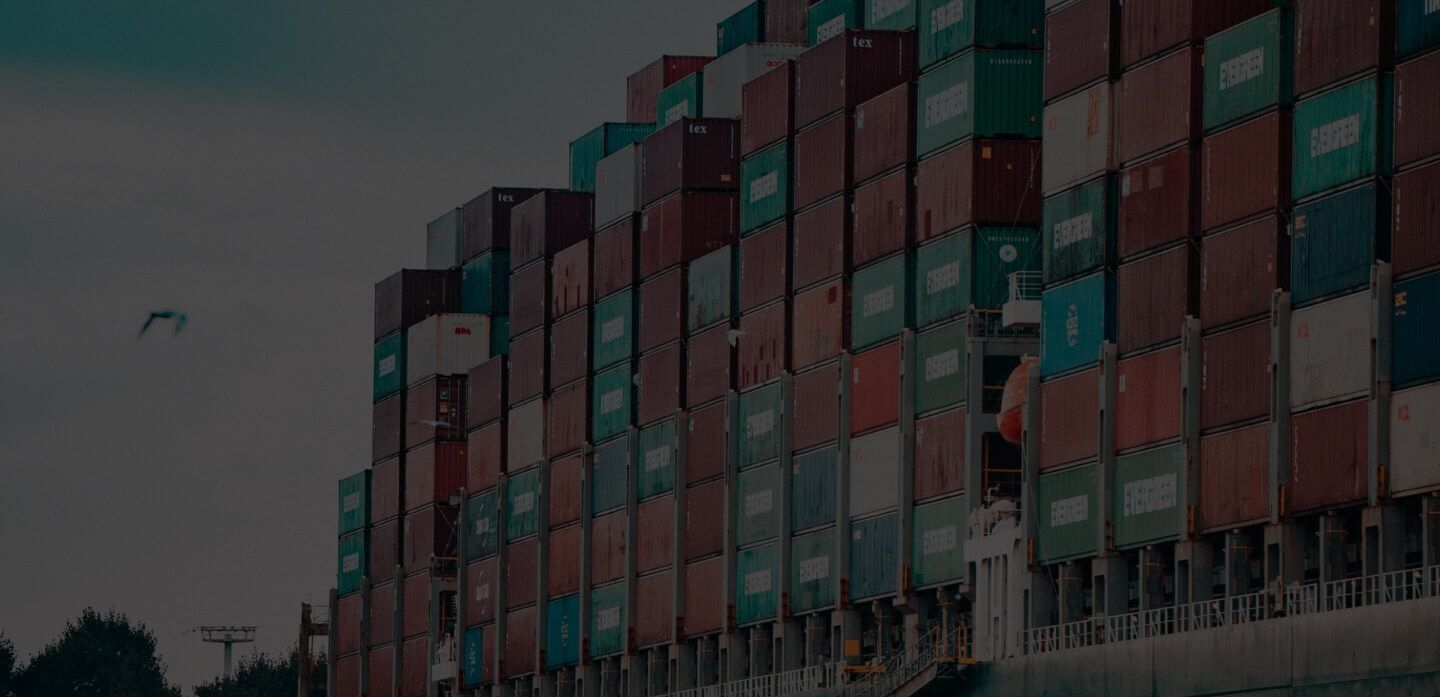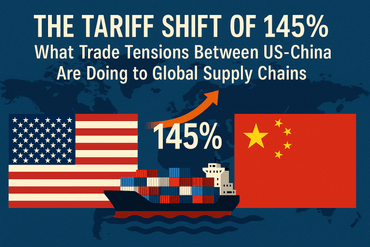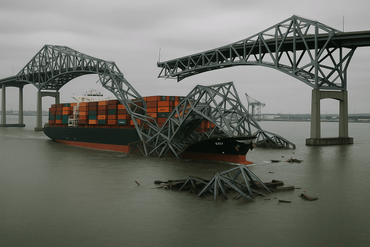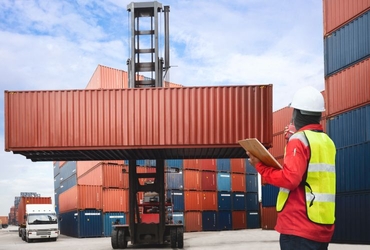
The Hanjin Ripples



When a butterfly flaps its wings, it sets off a chain of unforeseen and unpredictable reactions. This is famously coined as the butterfly effect or the chaos effect. When said butterfly is Hanjin Shipping , the power of its wings has the potential to generate an unprecedented level of chaos on global trade. Following the carrier’s application for court receivership, experts have described the downfall of South Korea’s no. 1 shipping line as the largest bankruptcy in the ocean freight industry. As much as it was, perhaps, anticipated, the collapse will undeniably cause huge repercussions to be felt for years.
The rise and fall of Hanjin Shipping
Hanjin Shipping is a significant player in the global shipping industry. With a 2.9% market share, it holds the position as the seventh-largest shipping line in terms of capacity. It plays a key role in US trade, representing nearly 8% of transpacific trade volume for the US market. Here’s an infographic of the carrier’s company profile.
Faced with a prolonged depression in the shipping industry, Hanjin Shipping’s figures have been in the red four out of the past five years. In April, it successfully appealed for a creditor-backed restructuring scheme. Creditors wanted the company to cough up at least one trillion won in short-term liquidity. And so, lengthy and tedious negotiations with charter fleets and lenders kicked off.
With the September 4th deadline for a self-rescue plan fast looming, it appeared Hanjin Shipping was able to make advances, announcing progress over the August 27th/28th weekend. But just days later, the carrier said it could only come up with half of what creditors asked for. Creditors promptly walked away with a simple yet curt statement that left Hanjin no choice but to file for court receivership, triggering inflated container shipping rates and further straining supply chains.
“A creditor-led restructuring will end now. The company will have to find its own way to survive.”
– Official at Korea Development Bank, 30th August 2016
Hanjin Shipping effects on other companies
South Korea is one of the global leaders in the shipping sector. With shipping accounting for 90% of global trade, this fallout is undeniably going to have harsh repercussions on the already fragile world economy. South Korean companies employing the services of Hanjin will be hard-hit. Already, various companies have announced they will have to look at other alternatives. Here’s a quick look at how Hanjin’s collapse will affect certain South Korean companies:
Samsung Electronics*: Hanjin Shipping handles around 40% of their shipping.
LG Electronics*: The world’s second-biggest TV manufacturers uses the embattled carrier for up to 20% of their exports to the US.
Korean Air: A subsidiary of parent Hanjin Group, its losses from its investments in the carrier is expected to reach as much as $700 million.
*Hyundai Merchant Marine (HMM) have entered talks with Samsung and LG to manage their cargo
Hanjin Shipping effects: Santa in logistics limbo
Whether you’ve been naughty or nice, don’t be surprised if Santa fails to pay you a visit come December 25th. The shipping industry is entering its busiest time of the year. Stocks should be arriving thick and fast from Asian destinations just ahead of the holiday season. But retail shops around the country may now find themselves facing empty shelves. The unfortunate timing of Hanjin’s slump has translated into a tight supply chain. Containers of holiday gifts are now floating around international waters on board Hanjin vessels stuck in limbo, as they await further developments. Ports all over the world are denying access to Hanjin’s vessels, for fear that the embattled carrier won’t be able to pay its fees. Other vessels were ordered to hold back by the company itself to avoid seizure by creditors. Experts say this deadlock could last as long as weeks or months.
“Unpredictable freight rates are not new phenomenon in the container industry, however a major upheaval of supply like this is likely to cause extreme short-term price volatility. Shippers should expect increasing freight costs and tight allocation for several weeks at least.”
– Richard Heath, General Manager of World Container Index
HMM: The pea that emerged from the pod
Who would have guessed that Hyundai Merchant Marine, who were, themselves, in a comparably worse situation at the turn of the year, could be the ones picking up Hanjin’s pieces? Let’s set aside the merger rumors that have been floating around for a while now. The South Korean government wants HMM to acquire their counterpart’s healthy assets. But with HMM having just emerged from a precarious situation themselves, this could be ill-advised. The company has so far kept silent with regards to asset-acquisition. But it will ease the logistics strain by deploying 13 ships to cover previous Hanjin-operated routes (nine on European routes and four on US routes).
Freight industry shakeup from Hanjin Shipping’s collapse
Shipping alliance CKYHE, of which Hanjin is a part, acted quickly. The group owns a 35% market share on the Asia-Transpacific trade. It suspended Hanjin’s membership a day after the carrier filed for court receivership. All four carriers, Cosco, K Line, Yang Ming and Evergreen all announced that they will no longer load their cargo onto Hanjin’s vessels, and vice versa. CKYHE aside, other shipping lines including CMA CGM and OOCL have also moved to distance themselves from the sunken carrier.
It’s also interesting to note the Hanjin Shipping effects on the shipping line mergers set to come into effect next year. Particularly the reaction of THE Alliance, the group of which Hanjin Shipping will be a part come April 2017. The group had seemingly lost HMM to 2M alliance at that point. Experts say losing Hanjin now would mean a size reduction of over 20% even before the alliance is launched. (Graph credit: SeaIntelligence Consulting)
iContainers announcement on Hanjin Shipping
Freight forwarding companies, including iContainers, sent out advisories to customers informing them of the measures they will take to ensure timely delivery of their shipment.
“The Hanjin bankruptcy basically sends the shipping industry into unchartered waters. We have never seen anything on this scale before and there is a long, hard road ahead for Hanjin’s vessel-sharing partners, customers and vendors alike. Not to mention the insurance companies and underwriters involved. Some will take some heavy losses. Hopefully as a whole, the industry will learn from this event.
In the short term, Hanjin’s demise drastically changes the market as it is. And we are seeing the effects immediately. Suddenly, there is a shortage of vessel capacity, which will mean space issues and rate increases in the near future. Several carriers have already announced GRIs for October 1st. And more increases will likely follow.”
– Klaus Lysdal, VP of Sales & Operations, iContainers
Early bird 2M alliance catches the trans-Pacific worm
Maersk Line and MSC are certainly lapping up the business opportunities Hanjin’s collapse has opened up. The two shipping lines, making up the 2M alliance, have announced trans-Pacific services that will begin on September 15th.
Maersk Line: TP1 service calling at Yantian, Shanghai, Busan and Los Angeles/Long Beach. Six vessels of 4,000TEU capacity.
MSC: Maple service calling at Yantian, Shanghai, Busan and Prince Rupert. Six vessels of 5,000TEU capacity.
Global shipping slump
Part of the ripples caused by Hanjin’s collapse includes an immediate increase in the already-swelling US import rates. Spot container freight rates on major routes from Asia skyrocketed 42% a day after Hanjin sought receivership. Eastbound trans-Pacific rates have already been climbing due to the peak shipping season. The downfall of Hanjin should come as a massive warning as it reverberates across the global shipping industry. The industry has operated at a loss since the end of 2015, amid an oversupply of vessels and a global trade slump. If trends continue, it will lose $5 billion this year.
“This is a reflection of the current turmoil in the shipping markets where oversupply of ships is simply killing the market. It’s simply too many ships and freight rates at historical lows.”
– Pradeep Rajan, Senior Managing Editor, Asia Pacific Shipping (Source: CNBC)
Neither does Hanjin’s collapse appear to be one-off. International ratings agency Fitch warns of more defaults and M&As in the short and medium term. That is if the current unsustainable and disproportionate supply-demand ratio continues. Further bankruptcies and consolidations will lead to lesser competition and a short-term positive impact on freight rates and capacity. But market players must eradicate this overcapacity for the sake of improving industry conditions.
If the carrier’s demise were to trigger anything, it would be yet more restructuring. Hanjin’s creditors’ refusal to provide additional funds signals a need for the reassessment of financing priorities within the industry.
Onto which shore will the waves next churn Hanjin Shipping?
Hanjin Shipping’s collapse is on a completely unprecedented level. So it’s hard to tell just how things will develop from now. The company says it will move to file for asset-protection in 43 territories to prevent further seizure of its ships. For further insights, Splash 24⁄7 has outlined Hanjin’s path going forward in this comprehensive post.
However, one thing is clear. Following the court’s approval of its receivership, Hanjin now has until December to submit a rehabilitation plan to avoid liquidation. But some analysts say it’s just prolonging the inevitable end of an orderly liquidation. Here’s an infographic of the carrier’s 2016 road to court receivership.
![]()
Related articles:
- 1. The rise and fall of Hanjin Shipping
- 2. Hanjin Shipping effects on other companies
- 3. Hanjin Shipping effects: Santa in logistics limbo
- 4. HMM: The pea that emerged from the pod
- 5. Freight industry shakeup from Hanjin Shipping’s collapse
- 6. iContainers announcement on Hanjin Shipping
- 7. Early bird 2M alliance catches the trans-Pacific worm
- 8. Global shipping slump
- 9. Onto which shore will the waves next churn Hanjin Shipping?
Related Articles


